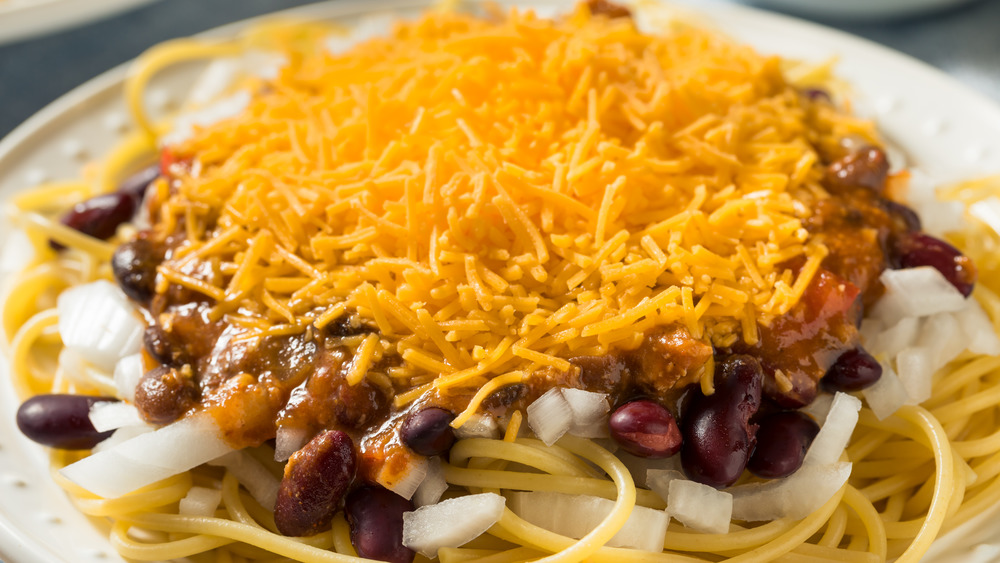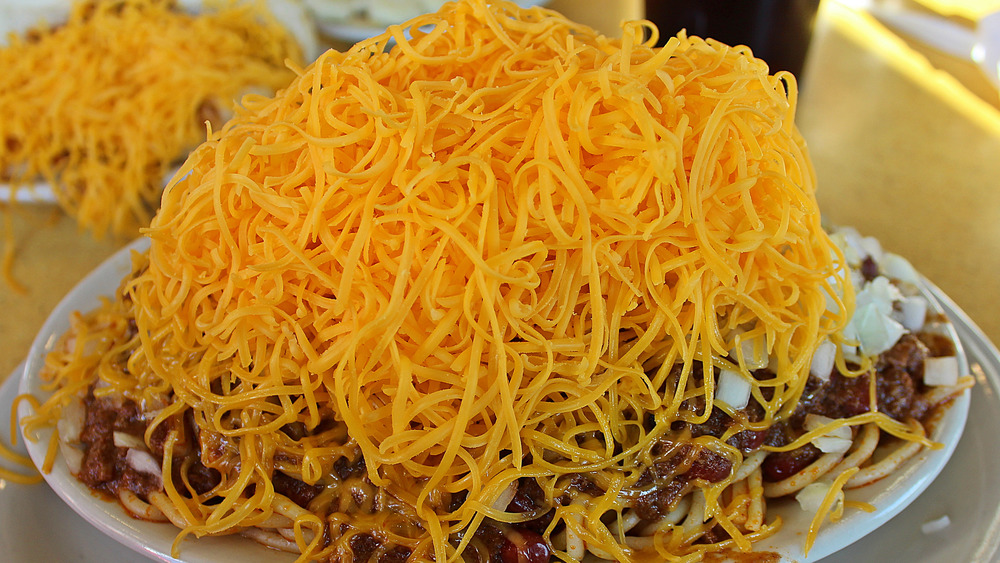The Reason People Think Cincinnati Chili Isn't Actually Chili
If someone has ever served you Cincinnati chili, you probably have fallen into one of two camps — you can't get enough of this regional dish that combines spaghetti, shredded cheddar cheese and meat sauce together, or you find it to be an abomination against nature and can't stand it. According to What's Cooking America, the Macedonian immigrant, Tom Kiradjieff, invented the dish at his Greek restaurant in 1922. The original recipe came with a plateful of spaghetti and scoops of meat sauce, chopped onion, kidney beans, and shredded yellow cheese, with oyster crackers and a side order of hot dogs topped with more shredded cheese on the side. This meal evolved into what we know today as Cincinnati chili, and has caused more than one culinary controversy since it entered the public consciousness.
While diners through the Midwest and beyond have defended Cincinnati chili for years, many argue whether or not the dish can be defined as a proper chili. According to The Chicago Tribune, the point of contention lies in the sauce. A Cincinnati chili gets topped with a sauce made up of cloves, cinnamon, nutmeg, and a variety of Slavic Mediterranean flavors that you could never find in Texas, and the sauce gets cooked down to resemble a bolognese-like paste that has no resemblance to a pure American style chili. Factor in the combination of noodles and oyster crackers and foodie purists could never come to accept this dish as an actual chili.
The difference between Cincinnati chili and Texas chili
When you compare a Texas-style chili against Cincinnati chili, the differences feel like night and day. According to Little Spice Jar, a Texas chili needs to contain cilantro, mexican oregano, smoked paprika, cumin, chili powder, cocoa powder, ancho chili powder and chipotle powder. Compare these spices to a Cincinnati chili that uses chili powder, cumin, cinnamon, cloves, allspice, bay leaves, and cayenne powder, and you can immediately taste the difference (via Allrecipes).
While these recipes don't resemble one another, no one can deny how the recipes truly define American cuisine. Both styles of chili took its current form in the U.S. and adapted to their local culinary environments to become staples of its regions. While you may not accept Cincinnati chili as a true chili, you can't deny its status as one of the most American meals, as iconic as hot dogs and apple pie. Don't knock the dish until you try it — you might just find your new favorite meal in this Midwestern favorite.

